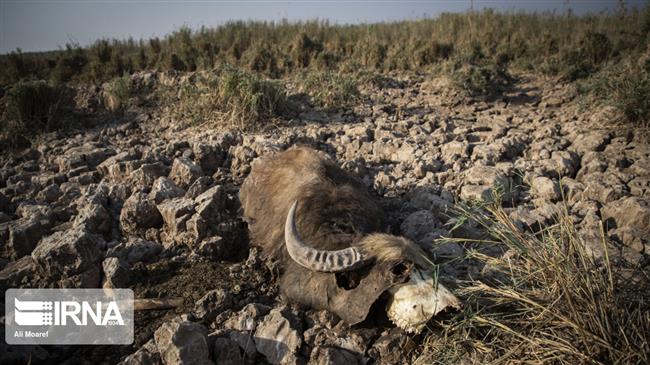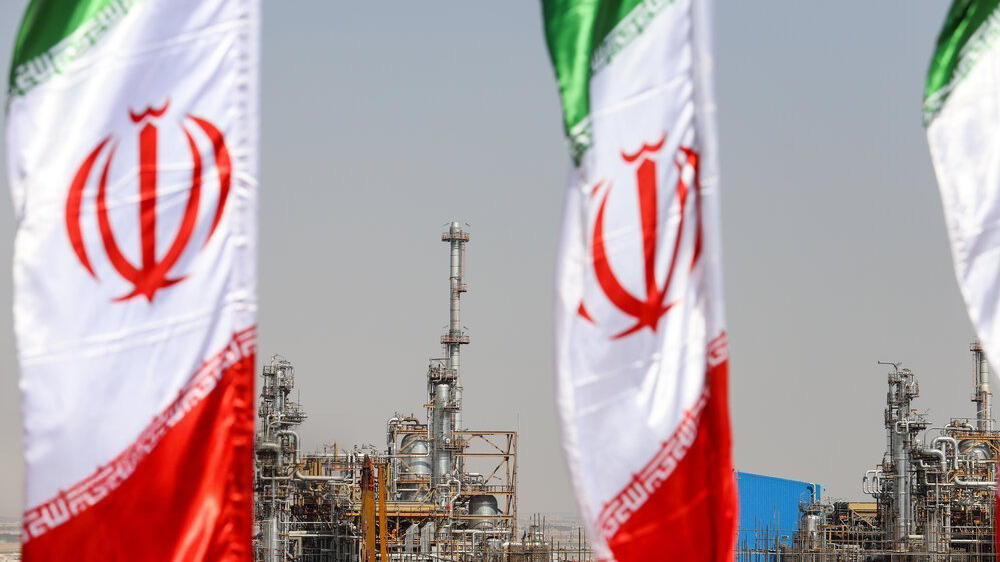Flood irrigation caused water shortage in Iran’s Khuzestan province: Report
Increasing use of flood irrigation methods in rice fields in Iran’s Khuzestan province caused a major water crisis in the region which led to deadly protests in recent days, shows a new report.
The Thursday report by semi-official Fars news agency said that rice farming on the banks of Karkheh River in Khuzestan has been responsible for a dangerous water shortage in Hawizeh Marshes where death of buffalos and water scarcity in the countryside caused people to take to the streets earlier this week.
Protesters have been angry at a reported decision by local authorities to decrease the amount of water released from Karkheh Dam, Iran’s largest reservoir where water level has dropped to record lows this year due to an unprecedented drought.
Scores of buffaloes have died as a result of water situation in Hawizeh Marshes while rural population in the region has also suffered.
The Fars report said water released from Karkheh Dam has been stable at 75 cubic meters per second (m3/s) this year despite a significant decrease in the amount of water held in the reservoir compared to previous years.
It said water should have reached Hawizeh Marshes, located 300 kilometers off the dam at the Karkheh River’s downstream, at 13-14 m3/s if it was not for increased use of flood irrigation practices in rice fields.
“Excess use of water in rice paddies along the river led to zero intake at Hawizeh Marshes and caused water crisis in villages of the region,” said the report.
Rice farming has become popular in Khuzestan in recent years mainly due to higher precipitation rates which even caused flash floods in the region in March 2019.
Latest government figures show over 180,000 hectares of lands in Khuzestan have been dedicated to rice farming this calendar years starting March.
The figure represents nearly a fourth of the total rice cultivation area in Iran, a country where the crop is mostly grown in humid regions in the north.
Protests in western regions of Khuzestan caused authorities to more than double the amount of water released from Karkheh Dam to 160 m3/s, according to latest reports.
The Fars report said water is currently arriving at Hawizeh Marshes at 8 m3/s, adding that it would increase to 20 m3/s within the next few days.
VIDEO | Iron walls: One year of Israel’s largest military operation in Palestine in years
Italian farmers protest EU-Mercosur free trade deal
VIDEO | Russian FM holds annual press briefing, highlighting ‘equality-based’ diplomacy
VIDEO | Israel rejects Gaza 'technocratic body' amid continued suffering in Gaza
Iranian prodigy Benyamin Faraji wins Under-17 title in Qatar
VIDEO | Press TV's news headlines
VIDEO | Tehran residents condemn US-Israel orchestrated mosque arson, vandalism
VIDEO | South Koreans demand end to joint US military drills and provocative policy against North Korea











 This makes it easy to access the Press TV website
This makes it easy to access the Press TV website